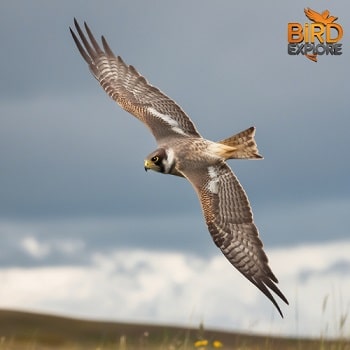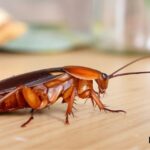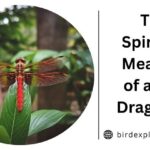Hawks in Ohio rich and varied ecosystems serve as a home to a vibrant array of wildlife, particularly birds of prey like hawks in Ohio. These magnificent birds fascinate birdwatchers and nature enthusiasts alike. In this comprehensive guide, we will explore ten species of hawks you can find in hawks in Ohio, delving into their characteristics, habitats, and ecological significance. By the end, you will gain a deeper understanding of these incredible raptors and how they contribute to hawks in Ohio natural world.
The Diverse Bird Life of hawks in Ohio
hawks in Ohio offers an impressive range of ecosystems, from dense forests and expansive wetlands to bustling urban areas and open farmland. This variety creates ideal habitats for numerous bird species, making Ohio a premier destination for birdwatchers.

Key Habitats
Understanding the different habitats will enhance your birdwatching experience, especially when searching for hawks in Ohio.
Forests: These areas provide shelter and nesting sites for several hawk species. Birds like the Red-shouldered and Broad-winged Hawks thrive in these wooded environments.
Wetlands: Wetlands support a diverse range of wildlife and attract Northern Harriers, which hunt over waterlogged fields.
Grasslands: Open fields offer ample hunting opportunities for hawks like the Red-tailed Hawk.
Urban Areas: Surprisingly, cities also serve as habitats for certain hawks, showcasing their adaptability. Cooper’s Hawks often thrive in urban settings, hunting in parks and residential areas.
hawks in Ohio diverse landscapes foster vibrant birdlife. As you explore these habitats, you may encounter a variety of birds, from songbirds to majestic raptors.
Overview of Hawk Species in Ohio
Hawks in Ohio hosts ten notable species of hawks, each uniquely adapted to its environment. These birds play crucial roles in maintaining ecological balance by controlling rodent populations and promoting ecosystem health.
Hawk Species Overview
Here’s a table summarizing key characteristics of the ten hawk species you’ve listed:
| Species | Size | Habitat | Diet | Migration | Nesting | Call |
| Red-tailed Hawk | Medium to large | Open fields, forests | Small mammals, birds | Some are migratory | Stick nests in trees | Harsh, raspy |
| Red-shouldered Hawk | Medium | Wooded areas, swamps | Small mammals, frogs | Partial migrator | Stick nests in trees | Loud, piping |
| Sharp-shinned Hawk | Small | Wooded areas | Small birds | Migratory | Built in trees | High-pitched |
| Cooper’s Hawk | Medium | Wooded areas | Small birds | Migratory | Built in trees | Series of sharp calls |
| Broad-winged Hawk | Medium | Forests | Small mammals, birds | Strong migrator | Stick nests in trees | Whistled calls |
| Northern Harrier | Medium | Marshes, grasslands | Small mammals, birds | Migratory | Ground nests | Soft, loping call |
| Rough-legged Hawk | Medium | Open country, tundra | Small mammals, birds | Migratory | Stick nests on cliffs | Low, raspy |
| Swainson’s Hawk | Medium | Grasslands, fields | Insects, small mammals | Long-distance migrator | Stick nests in trees | Low, raspy |
| Ferruginous Hawk | Large | Grasslands, open areas | Small mammals, birds | Partial migrator | Ground nests or trees | Low, booming call |
| Harris’s Hawk | Medium | Arid regions | Small mammals, birds | Some sedentary | Stick nests in trees | Series of barks |
Habitat and Distribution
Hawks in Ohio thrive in a variety of habitats, each providing unique resources that support their survival. By understanding these habitats, you can increase your chances of spotting these magnificent birds.
Habitat Preferences
Open Fields: Red-tailed Hawks prefer open landscapes where they can hunt from elevated perches, scanning the ground for movement.
Mature Forests: The Red-shouldered Hawk and Cooper’s Hawk favor dense wooded areas, which offer plenty of cover for nesting and hunting.
Wetlands: Northern Harriers enjoy open wetlands where they can fly low, scanning for small mammals and birds.
Urban Areas: Cooper’s Hawks have adapted to urban environments, often seen hunting in parks, yards, and along streets.
Understanding where these hawks prefer to live will help you locate them more effectively during your birdwatching excursions.
1. Red-Tailed Hawk
The Red-tailed Hawk is one of the most recognizable birds of prey in North America. Its striking appearance and adaptable nature make it a common sight in hawks in Ohio.

Identification and Characteristics
Size: Red-tailed Hawks range from 18 to 26 inches in length, with a wingspan that can reach up to 58 inches.
Coloration: These hawks in Ohio feature a distinctive reddish-brown tail and light underparts with dark streaks. Juveniles may have more mottled brown and white plumage.
Behavior: Red-tailed Hawks are known for their soaring flight. They often glide on thermals, looking for prey below.
Habitat Preferences
You will find Red-tailed Hawks in open fields, agricultural areas, and even urban landscapes. They often perch on telephone poles, fences, and trees, making them relatively easy to spot.
Diet and Hunting Techniques
Red-tailed Hawks primarily feed on small mammals, such as rabbits, rodents, and birds. They employ a hunting technique called “stooping,” where they dive from a high perch to capture their prey. Their keen eyesight allows them to spot movement from great distances, making them highly effective hunters.
2. Red-Shouldered Hawk
The Red-shouldered Hawk captivates birdwatchers with its vibrant plumage and distinctive call. This medium-sized hawk thrives in Ohio’s forested areas.

Appearance and Size
Size: Red-shouldered Hawks range from 15 to 24 inches in length, with a wingspan between 35 to 50 inches.
Coloration: Adults showcase reddish-orange underparts, contrasting with dark brown and white barring on their wings.
Typical Habitat
You can find Red-shouldered Hawks primarily in mature forests, especially those near water sources like swamps and streams. They prefer dense vegetation for nesting and hunting.
Behavior and Nesting
Red-shouldered Hawks are known for their distinctive “kree-kree-kree” calls. They build large nests in tall trees, using sticks and other materials. During the breeding season, you might hear their calls echoing through the forest as they establish their territory.
3. Sharp-Shinned Hawk
The Sharp-shinned Hawk is the smallest hawk species in North America, known for its remarkable agility and stealth. This hawks in Ohio is a favorite among birdwatchers for its elusive nature.

Size and Distinctive Features
Size: Sharp-shinned Hawks measure between 9.1 to 15 inches in length.
Features: They possess short, rounded wings and a long tail, which enables them to maneuver quickly through dense forests.
Feeding Habits
Sharp-shinned Hawks primarily hunt smaller birds. They often ambush their prey, hiding in shrubs or near bird feeders. Their hunting strategy involves rapid, agile movements, making it challenging to spot them.
Nesting Behavior
These hawks in Ohio build their nests in dense coniferous or deciduous forests. They often use sticks and other natural materials to create a sturdy nest high in the trees. After the breeding season, they migrate to warmer climates, which makes them less visible during the winter months.
4. Cooper’s Hawk
The Cooper’s Hawk is a medium-sized raptor known for its impressive hunting skills and adaptability. This hawk often finds its way into urban areas, making it a common sight for city dwellers.

Identification Tips
Size: Cooper’s Hawks range from 14 to 20 inches in length.
Tail: Their tail is longer and more rounded compared to the Sharp-shinned Hawk.
Plumage: These hawks in Ohio display blue-grey feathers on their back and reddish-orange bars on their chest, making them easy to identify.
Behavior and Diet
Cooper’s Hawks primarily hunt small birds, including songbirds and doves. They often use a “surprise attack” strategy, darting through trees and shrubs to catch their prey off guard. You may spot them chasing their targets with impressive speed and agility.
Nesting Habits
Cooper’s Hawks build large nests in tall trees, often located near urban areas. They use sticks and foliage to create a sturdy nest, and the female usually lays 3 to 5 eggs. After hatching, the young hawks depend on their parents for food until they can hunt on their own.
5. Broad-Winged Hawk
The Broad-winged Hawk is a medium-sized raptor that thrives in forested areas. Known for its unique migration behavior, this hawk captures the attention of birdwatchers across Ohio.

Physical Traits
Size: Broad-winged Hawks range from 13 to 17 inches in length.
Coloration: They feature dark brown upperparts and a white underside with reddish-brown barring, making them visually striking.
Habitat and Breeding Behavior
You will often find Broad-winged Hawks in forests with open canopies, where they can easily spot prey. They build their nests in tall trees, returning to the same nesting sites each year.
Migration Patterns
Broad-winged Hawks are known for their impressive migration patterns. During the fall, they travel in large groups, creating spectacular “kettles” in the sky as they soar together. This behavior provides a thrilling sight for birdwatchers during migration season.
6. Northern Harrier
The Northern Harrier is a unique raptor known for its distinctive flying style and keen hunting abilities. This hawk prefers open landscapes, making it easier to spot.

Unique Characteristics
Size: Northern Harriers measure around 18 inches in length.
Facial Disk: They possess a unique facial disk that enhances their hearing, allowing them to detect prey even in dense cover.
Hunting Methods and Diet
Northern Harriers typically hunt small mammals and birds by flying low over fields and wetlands. Their hunting technique involves gliding just above the ground, scanning for movement. This behavior helps them catch unsuspecting prey.
Nesting Habits
These hawks in Ohio build their nests on the ground, often in tall grass or dense vegetation near wetlands. The female lays 4 to 6 eggs, which she incubates while the male provides food.
7. Rough-Legged Hawk
The Rough-legged Hawk is a winter visitor in hawks in Ohio, known for its impressive adaptations to colder climates. This hawks in Ohio stands out for its unique physical characteristics.

Winter Habitat
During the winter months, Rough-legged Hawks migrate to Ohio, where you can find them in open fields and marshes. They hunt for small mammals, particularly voles and rabbits.
Physical Description
Size: Rough-legged Hawks range from 18 to 24 inches in length.
Features: They possess feathered legs, which provide insulation in cold weather. Their coloration varies from dark brown to lighter shades, depending on the individual.
Hunting Techniques
Rough-legged Hawks hunt by hovering over fields, scanning for movement below. When they spot prey, they dive down with remarkable speed and precision.
8. Swainson’s Hawk
The Swainson’s Hawk is less common in Ohio but remains a fascinating bird for avid birdwatchers. Known for its unique migratory patterns, this hawk travels long distances between breeding and wintering grounds.

Identification and Characteristics
Coloration: Swainson’s Hawks typically display a mix of brown and white plumage, with lighter underparts.
Behavior: They are known for their distinct calls and social behavior during migration.
Habitat Preferences
Swainson’s Hawks prefer open grasslands and agricultural areas, where they hunt for small mammals and insects. They often nest in trees or shrubs, returning to the same locations each year.
Migration Behavior
These hawks in Ohio undertake impressive migrations, traveling thousands of miles between their breeding and wintering grounds. During migration, you might see them soaring in large groups, a breathtaking sight for any birdwatcher.
10. Ferruginous Hawk
The Ferruginous Hawk stands out as a large and striking raptor, renowned for its impressive hunting skills and adaptability to various habitats. This species ranks among the most powerful hawks in North America and captivates birdwatchers with its unique physical characteristics.

Identification and Characteristics
Size: Ferruginous Hawks measure between 20 to 26 inches in length and boast a wingspan that can exceed 56 inches.
Coloration: Their plumage showcases a mix of rich chestnut and grayish-brown hues. The feathered legs give them a distinctive appearance, and they feature a broad tail that appears white or light gray with dark bands.
Behavior: These hawks excel in soaring abilities, gliding at great heights while scanning the ground for prey. They adapt their hunting techniques to various environments, showcasing their versatility as predators.
Habitat Preferences
Ferruginous Hawks favor open habitats like grasslands, sagebrush areas, and agricultural fields. They often perch on elevated spots such as telephone poles, trees, or rocky outcrops, where they can survey a wide expanse of ground below.
Diet and Hunting Techniques
Ferruginous Hawks primarily hunt small mammals, including rabbits, rodents, and ground squirrels. They employ a hunting technique called “hovering,” where they maintain position in the air while searching for prey. Once they spot a target, they dive down swiftly to catch it.
Conservation Status
Ferruginous Hawks have a broad distribution across the western United States and parts of Canada. However, habitat loss and agricultural practices threaten their populations. Conservation efforts focus on protecting their habitats and raising public awareness about the significance of these magnificent birds.
10. Harris’s Hawk
The Harris’s Hawk impresses birdwatchers with its unique social behavior and striking appearance. This species not only stands out for its physical traits but also for its remarkable cooperative hunting techniques.

Identification and Characteristics
Size: Harris’s Hawks measure between 18 to 24 inches in length and possess a wingspan of 40 to 46 inches.
Coloration: They feature dark brown feathers with distinctive white markings on their tail and legs. Their reddish-brown shoulder patches add to their striking appearance.
Behavior: Unlike most hawks in Ohio, Harris’s Hawks hunt in family groups. They coordinate their efforts to capture prey, showcasing their impressive teamwork.
Habitat Preferences
Harris’s Hawks thrive in arid and semi-arid environments, including deserts and scrublands. They prefer areas with open spaces and scattered trees that provide ample perches for hunting and nesting.
Diet and Hunting Techniques
Harris’s Hawks primarily consume small mammals, birds, and reptiles. Their cooperative hunting behavior allows them to tackle larger prey effectively. They work together to flush out prey, taking turns to capture it, which boosts their hunting success rate.
Conservation Status
Currently, Harris’s Hawks do not face significant threats, but habitat destruction poses risks to their populations. Conservation initiatives aim to preserve their habitats and educate communities about the importance of maintaining healthy ecosystems for these remarkable bird
Both the Ferruginous Hawk and the Harris’s Hawk exemplify the incredible diversity of raptors in North America. By understanding their habits and habitats, birdwatchers can deepen their appreciation for the vital roles these hawks play in maintaining ecological balance.
Conservation Themes
Hawks play vital roles in maintaining healthy ecosystems in Ohio. By controlling prey populations and contributing to biodiversity, they help ensure the stability of their environments.
Nature Protection
Conservation efforts are crucial for preserving the habitats of hawks in Ohio and other wildlife. Protecting natural areas from urban development and pollution helps maintain the balance of ecosystems.
Wildlife Balance
Hawks in Ohio contribute to the balance of wildlife populations. By preying on small mammals and birds, they help regulate these populations, ensuring a healthy environment for all species.
Conservation Education
Engaging communities in conservation education fosters a greater appreciation for wildlife. Birdwatching can serve as a powerful tool for connecting people to nature, encouraging them to protect these incredible birds and their habitats.
Conclusion
Ohio’s diverse ecosystems offer excellent habitats for various hawks in Ohio species. Each of the ten hawks in Ohio we explored has unique adaptations that help them thrive in different environments. The Red-tailed Hawk glides over open fields, while the Sharp-shinned Hawk darts through dense forests. These raptors play vital roles in maintaining ecological balance by controlling small mammal and bird populations.
Understanding their behavior, nesting habits, and migration patterns enhances our appreciation for their importance in nature. As apex predators, hawks reflect the health of their habitats, connecting us to the intricate web of life around us.
However, urban development, agricultural expansion, and pollution threaten hawks in Ohio populations. We must actively support conservation efforts to protect these birds and their habitats. By advocating for green spaces and practicing responsible birdwatching, we can help safeguard not only hawks in Ohio but also the many species that share their environments.
In summary, your experiences in Ohio’s landscapes can inspire a commitment to protecting these incredible raptors. Every observation and action counts, whether you’re a seasoned birdwatcher or just starting to explore nature. Together, we can ensure that future generations enjoy the sight of hawks soaring across Ohio’s skies.

Kay Lovely is a dedicated writer for Bird Explore, where she brings the latest celebrity news and net worth updates to life. With a passion for pop culture and a keen eye for detail, Kay delivers engaging and insightful content that keeps readers informed about their favorite stars. Her extensive knowledge of the entertainment industry and commitment to accuracy make her a trusted voice in celebrity journalism.







